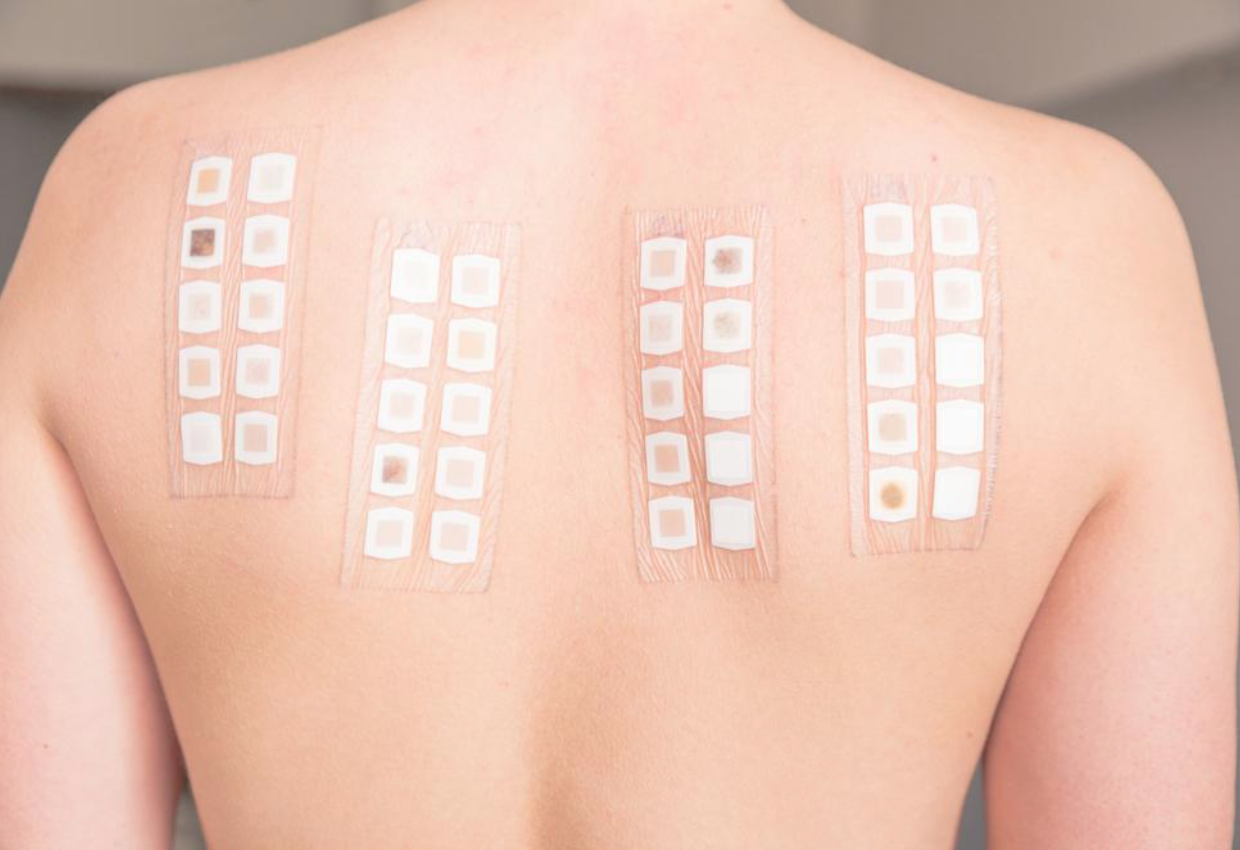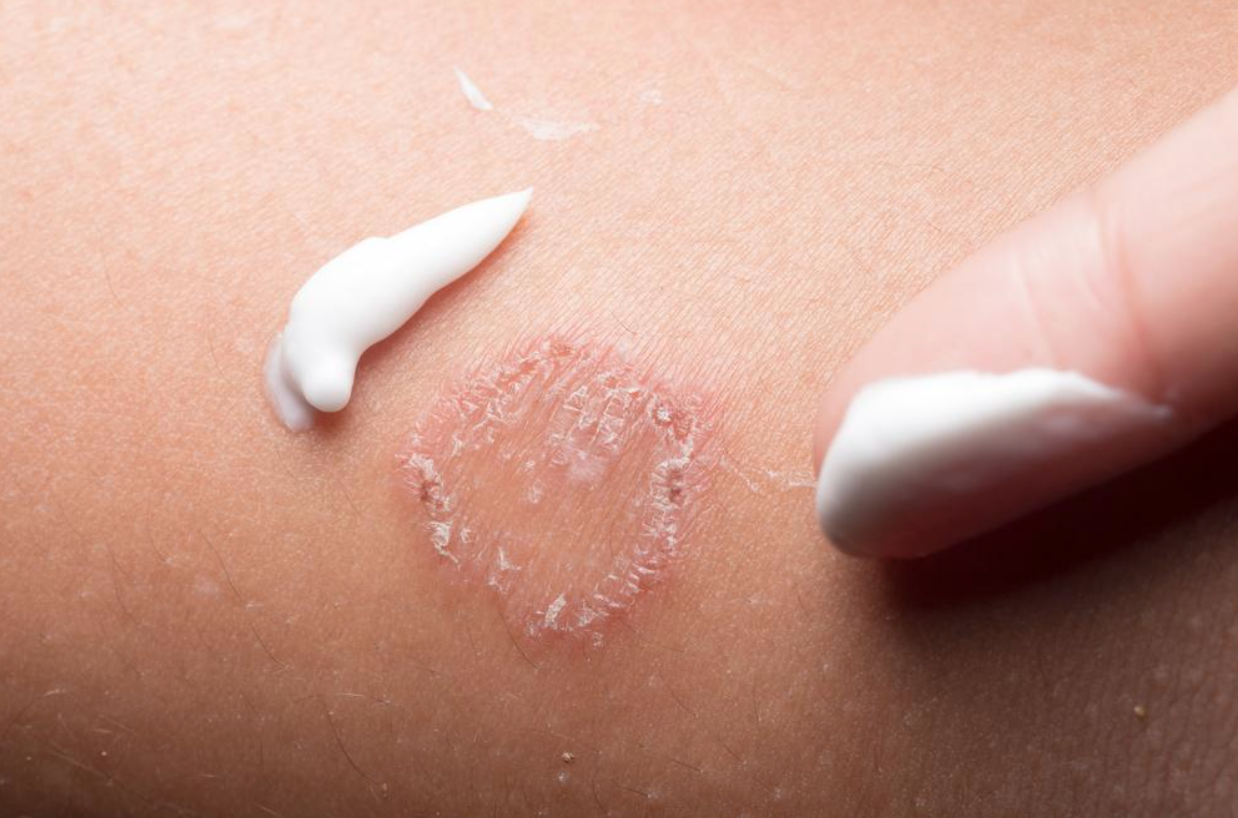11 Reasons to Patch and Test Your Beauty Products
When you purchase clean skincare products or new makeup, do you dive in and apply it to your skin right away or do you conduct a patch test to ensure the product’s ingredients agree with your skin? If you don’t conduct patch tests or you’re wondering what a patch test is, we are going to tell you all about what they are and why they are important. After reading this article, you should be able to conduct your own patch test, which will save you a lot of grief in terms of having allergic reactions and using the wrong products for your skin.
 Source: Neeila/Shutterstock.com
Source: Neeila/Shutterstock.com
What Does Patch and Test Mean?
Are you familiar with the patch and test process? If not, don’t worry; we have all the information you need to know. Patch and test processes exist to help you learn if you have allergies or sensitivities to new products you are introducing to your skin. Usually, when you introduce a new product to your routine, whether it is a serum, hair dye, lotion, or another skincare product, most manufacturers will advise you to conduct a patch test to ensure you don’t have a negative reaction. This is common for box hair dyes and facial hair bleaches that contain harsh chemicals that can cause adverse skin reactions.
However, even if you are using clean beauty products that don’t contain harsh chemicals, it’s still an important step to patch and test because clean beauty products can contain natural allergens that have an effect on many people. A patch and test is a great way to see if this new product was made for you. The risk is very low compared to applying the topical fully. During a patch test, you only apply the product to a small portion of your skin, usually on your back or on your hand or wrist. If you don’t have an adverse reaction to the product, then it’s safe to say you can use the product and expect not to have a reaction. However, if your skin starts to react to the product, you may want to cease using it.
 Source: frank60/Shutterstock.com
Source: frank60/Shutterstock.com
11 Reasons to Patch and Test Your Beauty Products
Are you wondering if you should start patch testing your beauty and skincare products? While we think that everyone should patch and test, here are a few reasons why patch testing is critical:
- If you have sensitive skin
- If you have allergies
- If you identify toxic chemicals in makeup within the product
- If you have had reactions to skincare or beauty products in the past
- If you’re trying a high-potency product like retinol
- If you have to apply the new product to a large area
- If your skin is damaged or broken
- If the product you are using smells funny or the formulation seems off
- If the product is expired
- If you’re unsure of the ingredients inside the product
- To avoid permanent damage or sensitivity to the skin
How to Patch Test
To conduct a patch test of your own, follow these steps to ensure your skin won’t react when you use the product normally:
- Select a part of your body that’s easy to monitor, but which won’t make you feel insecure if a reaction occurs. You will also need to ensure that this part of your body won’t come into contact with water.
- Apply as much product as you normally would to this area of skin, but try not to exceed a quarter-inch dab in diameter. This will help contain the reaction if there is one.
- Leave the product on your skin and monitor your skin’s response. A reaction may not occur immediately.
- If there is no reaction, try to patch test your skin again the next day. You can repeat a patch test, but if there is no reaction within 24 to 48 hours, it’s safe to say you can use the product.
 Source: Look Studio/Shutterstock.com
Source: Look Studio/Shutterstock.com
Skin Reactions to Look For When Patch Testing
As you begin to patch test your products, you will need to pay close attention to your skin. If you do experience any of these reactions, you should wash your skin with water and soap and immediately stop using the product. If your symptoms do not subside or they become unbearable, you should visit a doctor.
- Redness – If your skin is already sensitive and turns red when it’s touched, this may not be a symptom to be aware of. However, if you rarely experience skin irritation, but your skin starts to turn red, this could be a sign of reaction.
- Hives or Bumps – When conducting your patch test, if you notice bumps or hives starting to accumulate on your skin, you should discontinue the use of the product.
- Blisters – Some products can cause blisters if they set off an allergic reaction.
- Swelling – Skin can start to swell if products do not agree with your body.
- Burning – If your skin starts to feel hot or you get a burning sensation, this could be a sign that your body isn’t reacting to the product well.
- Skin Discoloration – If your skin begins to turn purple or it starts to lose pigment, this could be a sign that you’re having a bad reaction. The pigment can momentarily be stripped from the skin when using harsh hair dyes or bleaches at home.
Now, do you see why it’s important to conduct a patch test before applying the product to larger parts of your body? Luckily, if your patch test goes wrong, the reaction is contained to a very small part of your body and should subside. Think about it like testing a cleaning product on a patch of rug under some furniture or in another hidden area.
Before you dive into your new skincare and makeup products, make sure to do a patch and test to ensure that you don’t have a negative reaction that could seriously mess with your skin. The process of patch testing is well worth the wait and can save your skin from reactions that are temporary or which could last a lifetime!
About Sunny (Sunny's Profile)
Longtime vegan, hardcore compassionate beauty junkie, serious cake aficionado, and lover of all things floofy and sparkly! If there's something in particular you'd like me to review, drop me a line at Sunny@VeganBeautyReview.com. You can also find me on Facebook, Instagram, Twitter, YouTube, and Google +.Filed in: Vegan Beauty








